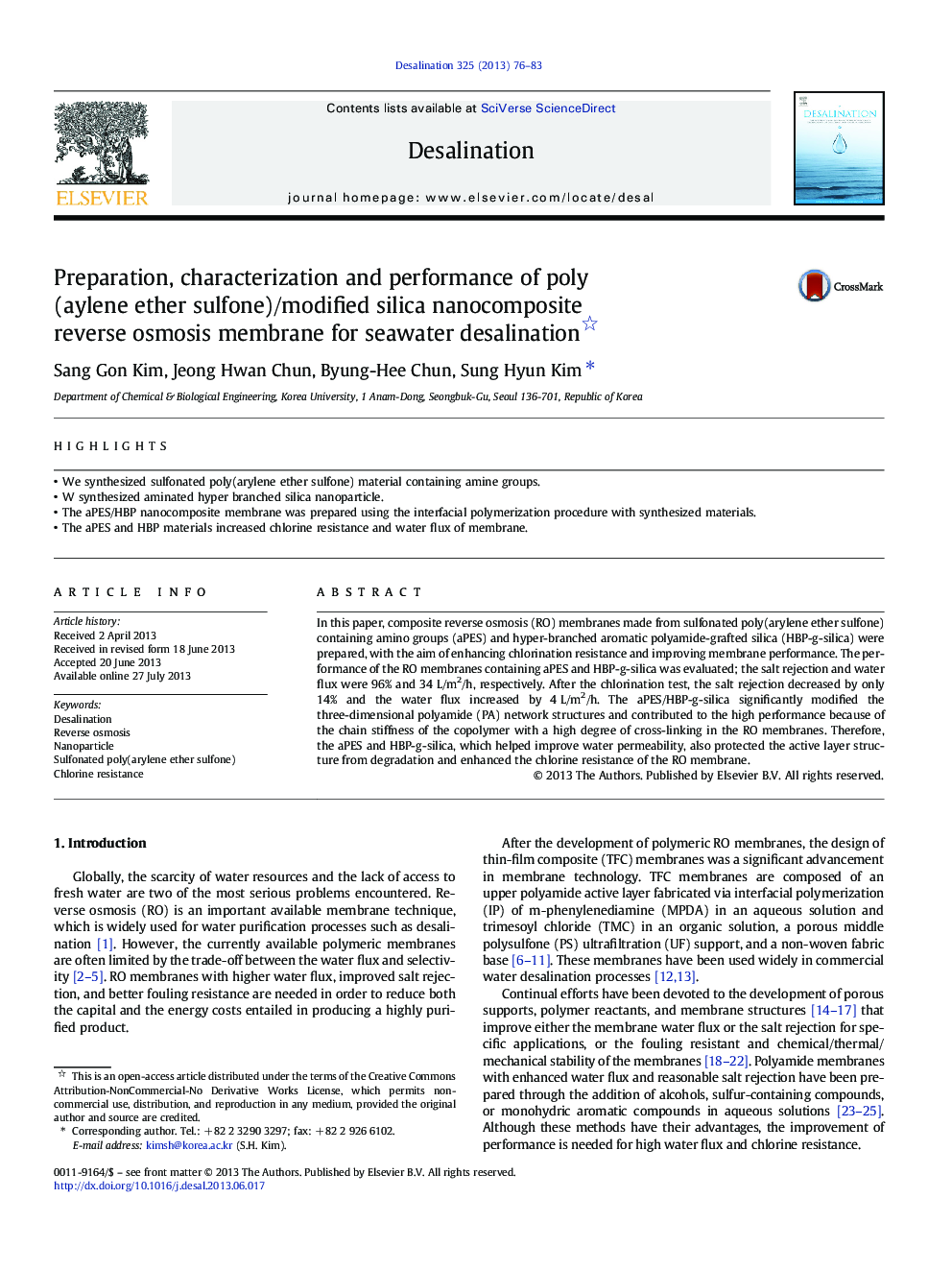| Article ID | Journal | Published Year | Pages | File Type |
|---|---|---|---|---|
| 7008605 | Desalination | 2013 | 8 Pages |
Abstract
In this paper, composite reverse osmosis (RO) membranes made from sulfonated poly(arylene ether sulfone) containing amino groups (aPES) and hyper-branched aromatic polyamide-grafted silica (HBP-g-silica) were prepared, with the aim of enhancing chlorination resistance and improving membrane performance. The performance of the RO membranes containing aPES and HBP-g-silica was evaluated; the salt rejection and water flux were 96% and 34Â L/m2/h, respectively. After the chlorination test, the salt rejection decreased by only 14% and the water flux increased by 4Â L/m2/h. The aPES/HBP-g-silica significantly modified the three-dimensional polyamide (PA) network structures and contributed to the high performance because of the chain stiffness of the copolymer with a high degree of cross-linking in the RO membranes. Therefore, the aPES and HBP-g-silica, which helped improve water permeability, also protected the active layer structure from degradation and enhanced the chlorine resistance of the RO membrane.
Keywords
Related Topics
Physical Sciences and Engineering
Chemical Engineering
Filtration and Separation
Authors
Sang Gon Kim, Jeong Hwan Chun, Byung-Hee Chun, Sung Hyun Kim,
